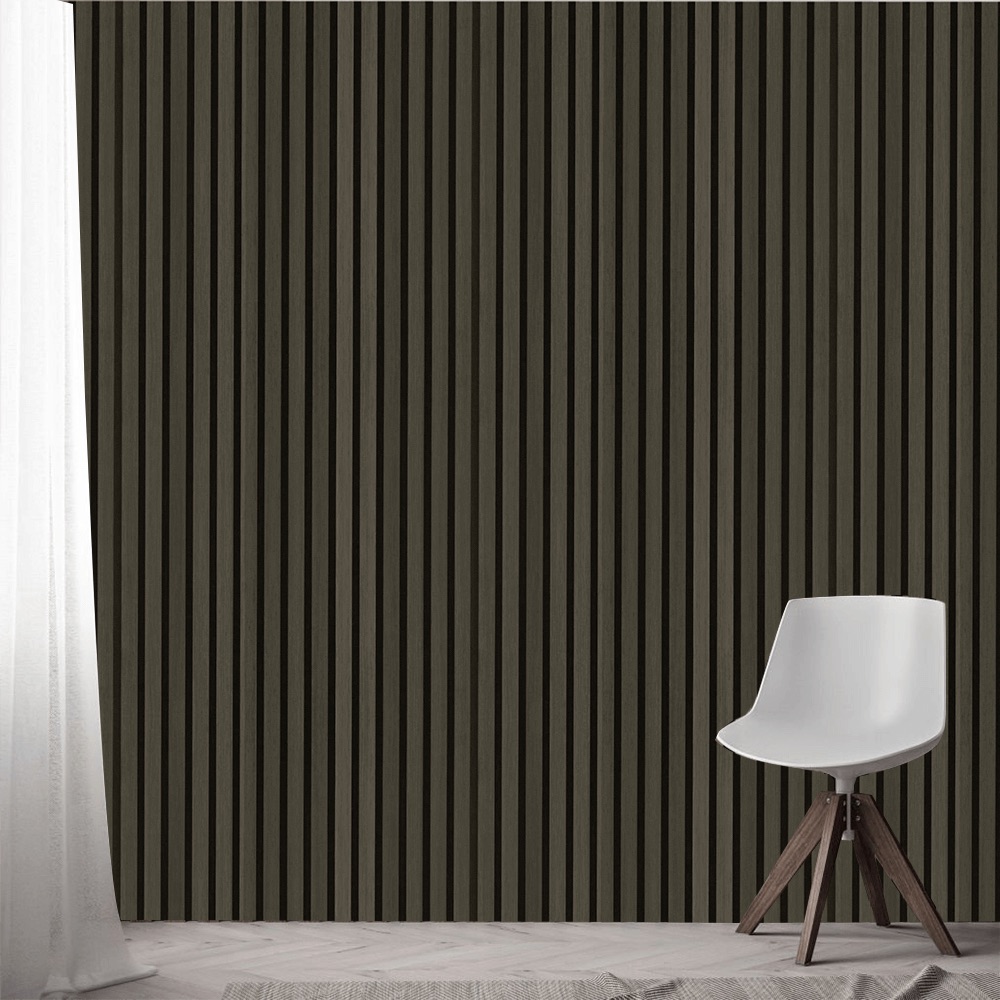When it comes to choosing the right wood for slat walls, making an informed decision is essential for both aesthetics and functionality. Slat walls not only enhance the visual appeal of a space but also offer practical benefits such as improved acoustics and easy installation. Below, we’ll explore the best wood types for slat walls, discussing their unique qualities and why they make great choices.
1. Oak: A Classic and Durable Choice
Oak is one of the most popular wood types for slat walls, known for its durability and timeless beauty. Here’s why oak stands out:
- Strength and Durability: Oak is exceptionally strong, making it ideal for slat walls that need to withstand weight or pressure over time.
- Grain Pattern: Oak’s distinct grain pattern adds character to any room, giving a rustic yet sophisticated look.
- Versatility: Whether it’s red oak or white oak, this type of wood can be stained or painted to match different design preferences.
Primary Uses: Oak slat walls are perfect for living rooms, offices, and commercial spaces where a classic, durable finish is desired.
Supporting Keyword Integration:
- Oak is one of the best types for slat walls due to its balance of beauty and resilience.
- When choosing types for slat walls, oak is often recommended for its durability.
2. Walnut: The Luxury Option
Walnut slat walls exude luxury and sophistication. This darker wood type is known for its rich color and smooth finish.
- Aesthetic Appeal: Walnut’s deep brown hues add a touch of elegance to any interior.
- Ease of Maintenance: Walnut is relatively easy to maintain, making it a practical yet upscale choice.
- Longevity: With proper care, walnut can last for decades without losing its visual charm.
Primary Uses: Ideal for accent walls in bedrooms, high-end office spaces, and feature walls in luxury homes.
Supporting Keyword Integration:
- Walnut is a preferred type for slat walls when aiming for an elegant design.
- Among various types for slat walls, walnut is cherished for its rich aesthetic.
3. Cedar: Natural and Aromatic
Cedar is an excellent choice for those who appreciate natural beauty and a pleasant scent. Its unique properties make it a standout for specific applications.
- Aromatic Benefits: Cedar emits a natural scent that repels insects and keeps spaces smelling fresh.
- Resistant to Decay: Its natural oils make cedar resistant to moisture and decay, perfect for humid environments.
- Distinct Appearance: The light color and subtle grain provide a clean, minimalist look.
Primary Uses: Cedar slat walls work well in bathrooms, basements, and other moisture-prone areas.
Supporting Keyword Integration:
- Cedar is often highlighted among types for slat walls for its natural resilience.
- When considering types for slat walls, cedar’s aromatic quality is a key feature.
4. Pine: Affordable and Adaptable
Pine is an excellent budget-friendly option that doesn’t sacrifice quality or visual appeal.
- Affordability: Pine is one of the most cost-effective types for slat walls, making it suitable for large projects.
- Lightweight: Its light weight simplifies the installation process.
- Customizable: Pine can be painted or stained to fit any decor theme, from modern to traditional.
Primary Uses: Great for DIY projects, children’s rooms, and feature walls in casual settings.
Supporting Keyword Integration:
- Pine is frequently chosen among types for slat walls for budget-conscious homeowners.
- For adaptable types for slat walls, pine offers excellent versatility.
5. Maple: The Modern Minimalist’s Choice
Maple is known for its light color and fine grain, making it a popular option for contemporary spaces.
- Smooth Surface: The fine grain of maple allows for a sleek, smooth finish.
- Light Color: The pale tones brighten up rooms and pair well with modern decor.
- Durability: Maple is relatively hard, making it durable for high-traffic areas.
Primary Uses: Perfect for minimalist living rooms, modern kitchens, and home offices.
Supporting Keyword Integration:
- Maple’s light, airy look positions it as a favorite type for slat walls in modern design.
- When selecting types for slat walls, maple’s fine grain is highly valued.
Quick Comparison of Wood Types for Slat Walls
| Wood Type | Key Features | Ideal Use Case |
|---|---|---|
| Oak | Durable, distinct grain | Living rooms, offices |
| Walnut | Luxurious, deep color | Bedrooms, feature walls |
| Cedar | Aromatic, moisture-resistant | Bathrooms, basements |
| Pine | Affordable, lightweight | DIY projects, kids’ rooms |
| Maple | Light color, fine grain | Modern living rooms, offices |
Bullet List: Top Benefits of Choosing Wood Slat Walls
- Enhances visual appeal
- Improves acoustics
- Easy to customize
- Adds natural warmth
FAQs
1. What is the best type of wood for slat walls?
Oak and walnut are considered some of the best types for slat walls due to their durability and aesthetic appeal.
2. Can I use pine for slat walls?
Yes, pine is an excellent choice for budget-friendly and versatile projects.
3. Why is cedar popular for slat walls?
Cedar is favored for its natural scent, insect-repelling properties, and moisture resistance.
4. Is maple a good wood for modern decor?
Absolutely. Maple’s light color and smooth finish make it perfect for modern, minimalist spaces.
5. Which wood type is easiest to maintain?
Walnut and oak are relatively easy to maintain and can last for years with proper care.
Choosing the right types for slat walls can transform a space, offering both aesthetic and functional benefits. By understanding the properties of each wood type, you can select the one that best suits your design goals and practical needs.








